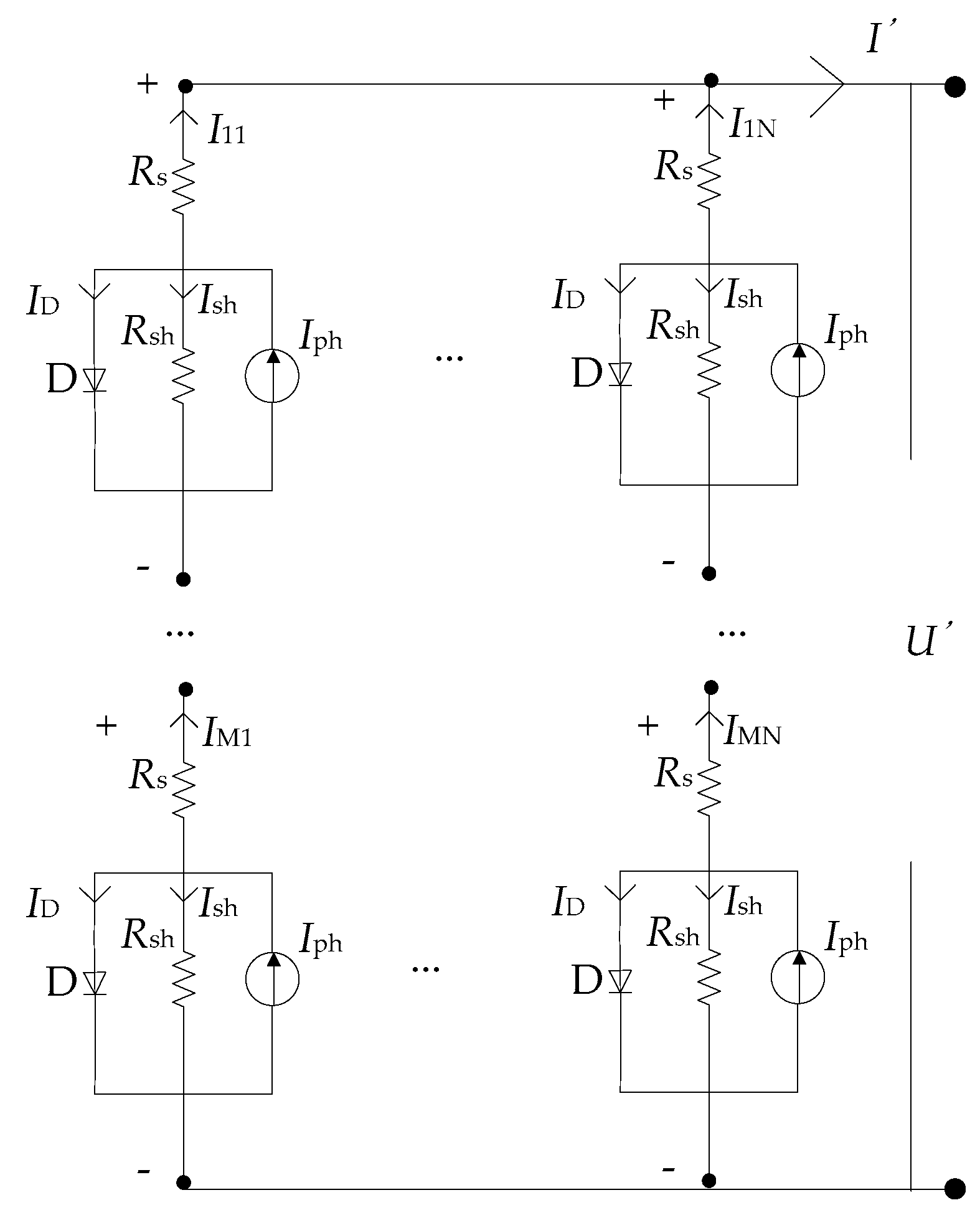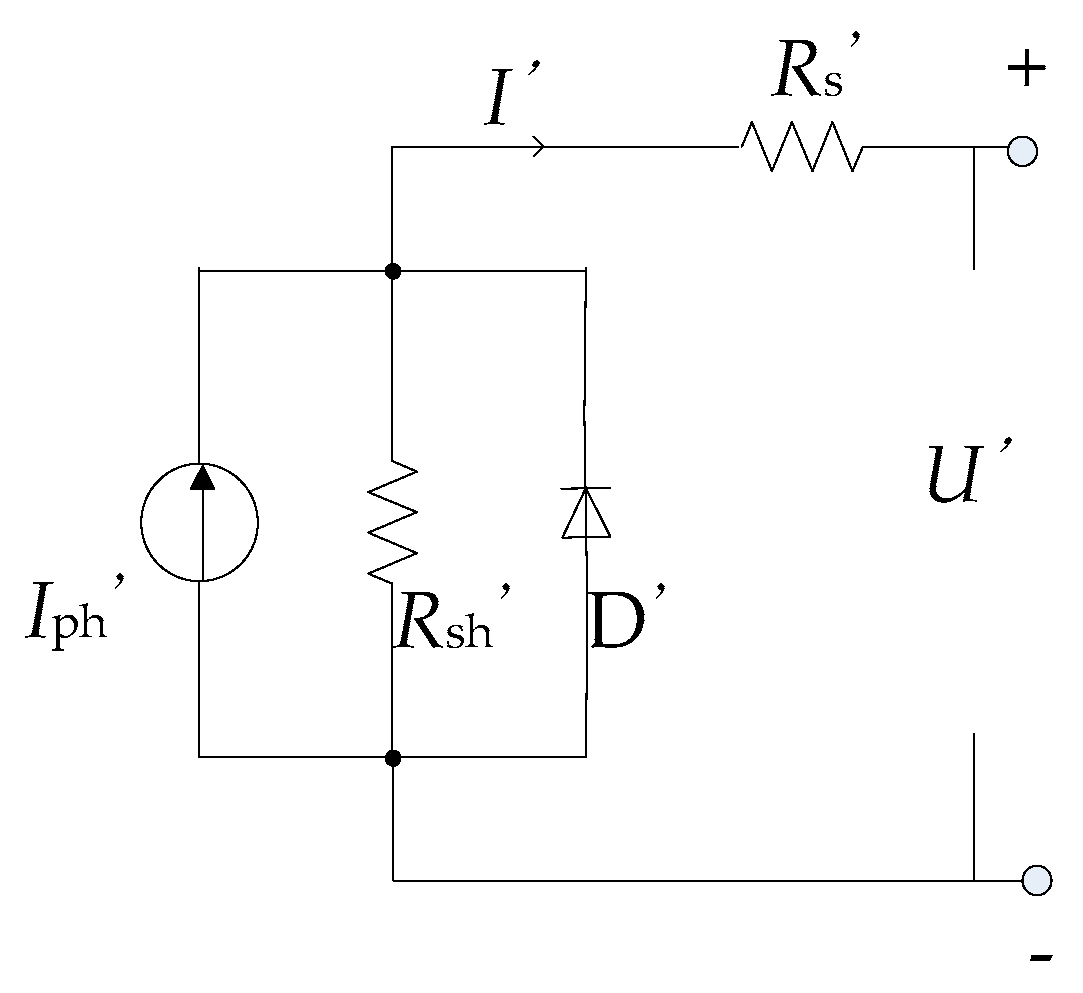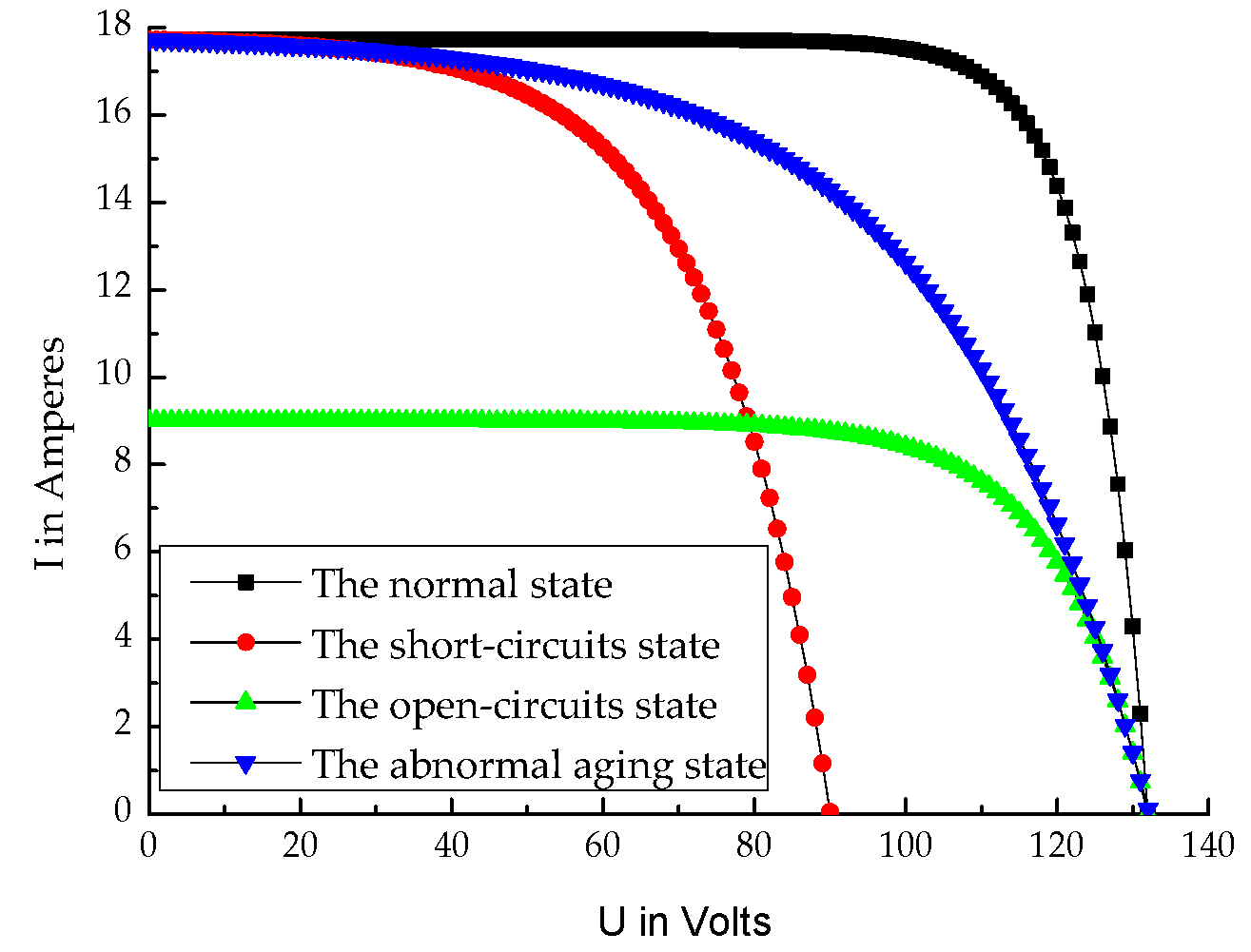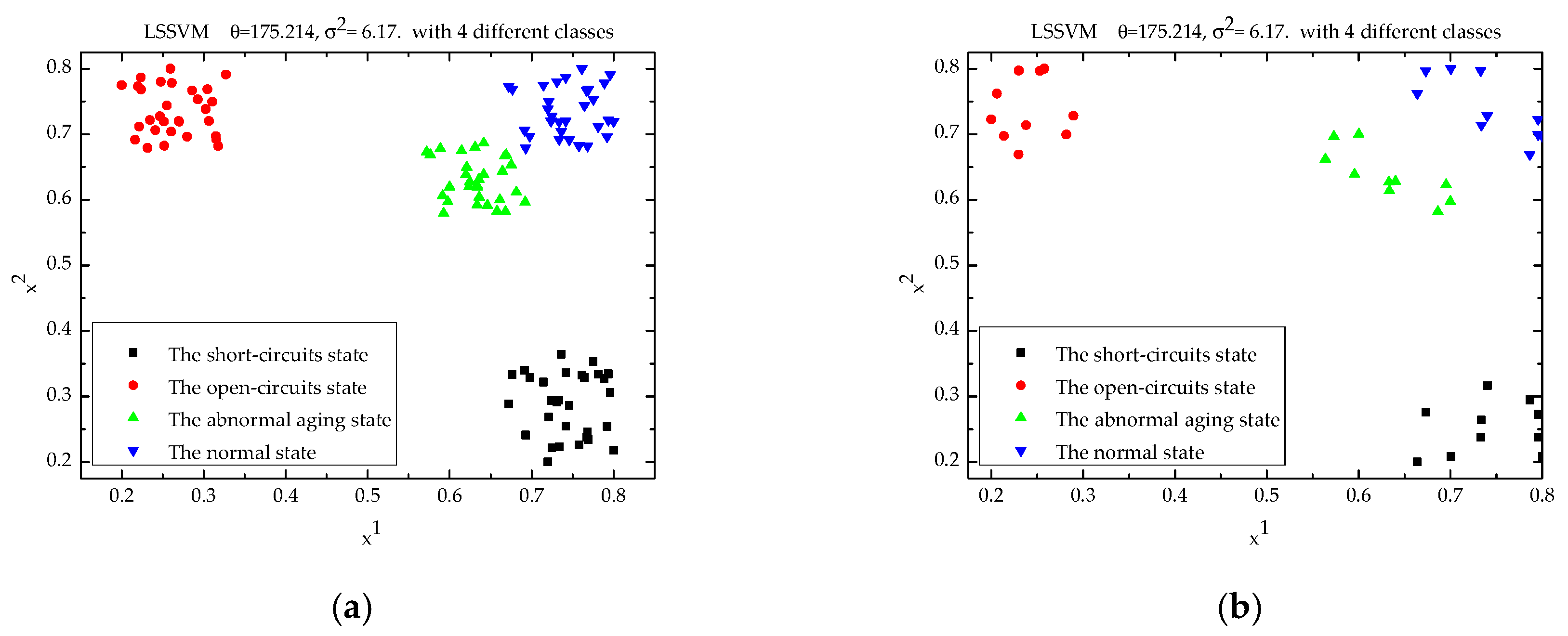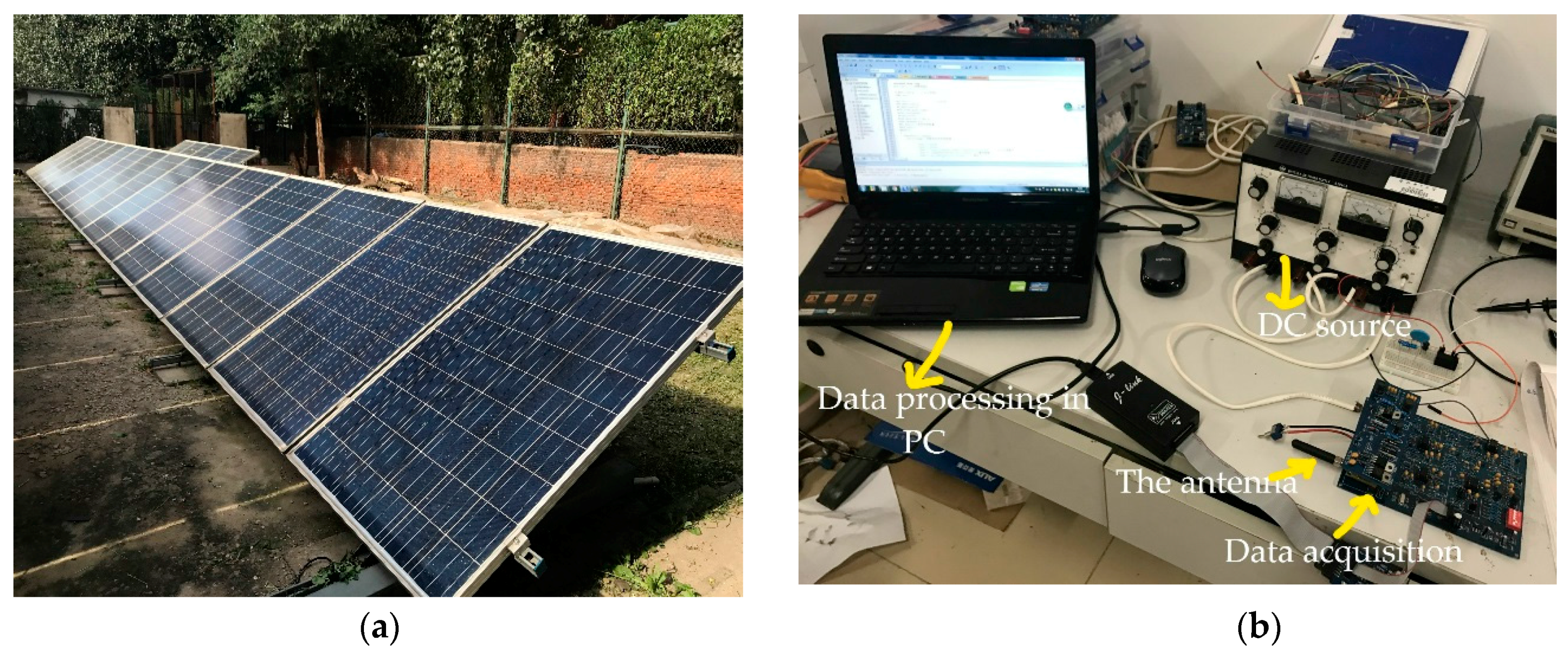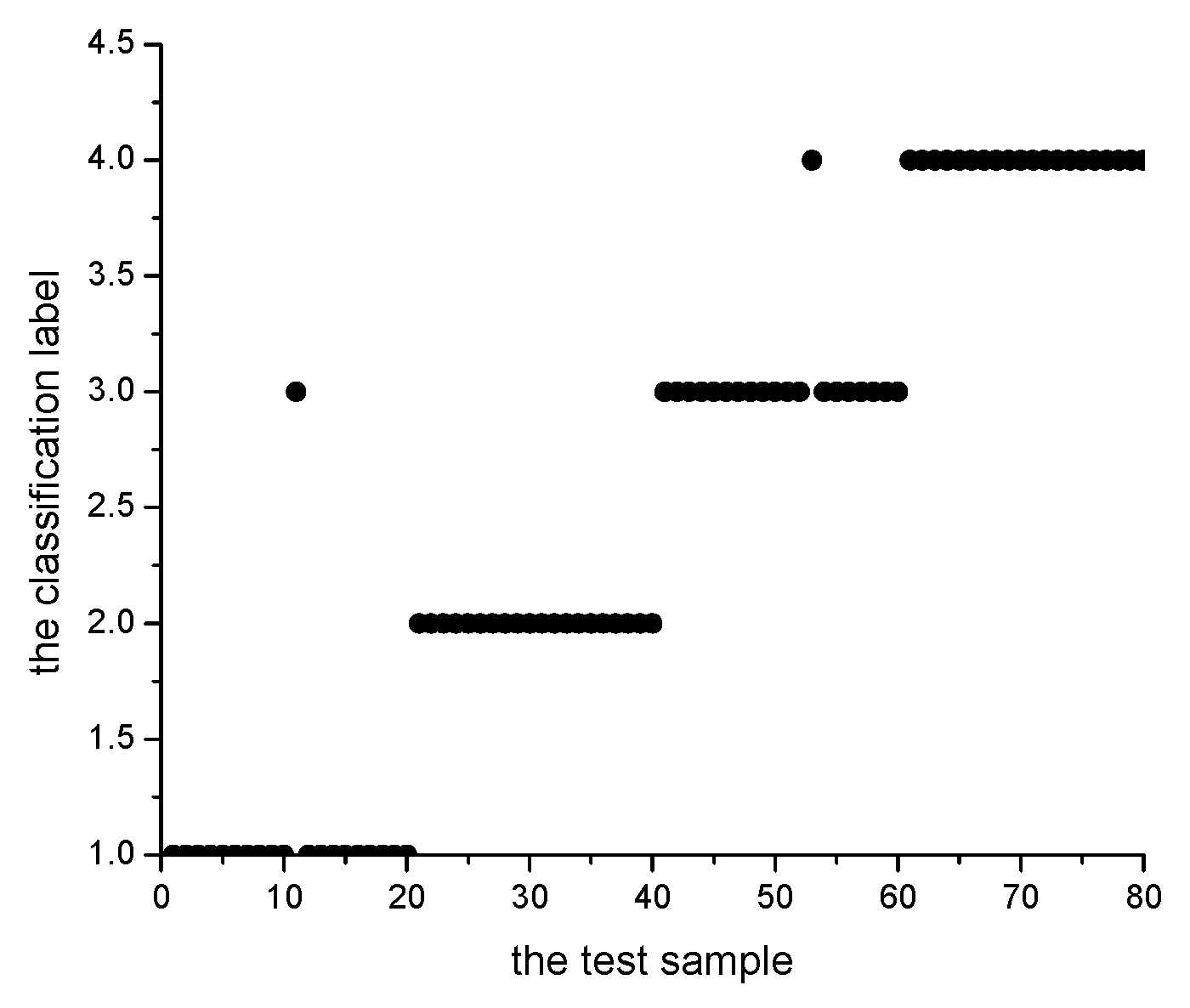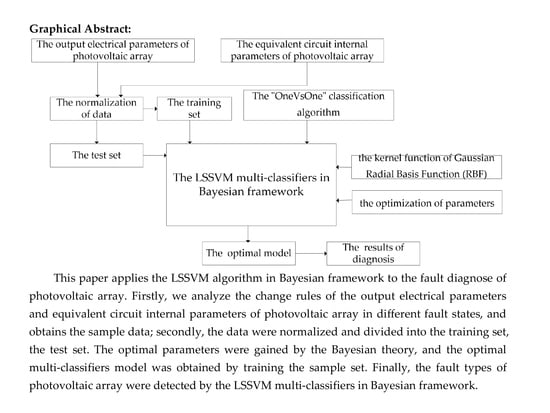This paper mainly focuses on the fault types of photovoltaic array: short circuit, open circuit, and photovoltaic modules’ abnormal aging. By analyzing the different fault types of photovoltaic array, we can obtain the change laws of the output characteristics and equivalent circuit internal parameters of photovoltaic array in different fault conditions, providing a theoretical basis and fault feature information for the diagnosis and location of photovoltaic array.
2.1. Analysis of Internal Parameters of Photovoltaic Array Equivalent Circuit in Fault State
If the photovoltaic array malfunctions, the internal parameters of the photovoltaic array equivalent circuit will change, and these differences contain the most abundant fault feature information, directly reflecting the state that the photovoltaic array is in.
Figure 1 presents the equivalent circuit model of photovoltaic module [
17],
Iρh is the photovoltaic current generated by the photovoltaic module,
ID is the current through the diode,
Ish is the current flowing through the shunt resistance
Rsh,
Rs is the series resistance, and
I is the output current of the photovoltaic module.
As the equivalent circuit model of photovoltaic module shows that the photovoltaic module output current is:
In the Formula, I0 is the reverse saturation current of the diode, U is the output voltage of the photovoltaic module, q is the electron charge ( Coulomb), n is the ideality factor of the diode, k is the Boltzmann’s constant ( J/K), and T is the absolute temperature of photovoltaic module.
In an actual solar power station, there are five major connection types of photovoltaic array: series structure, parallel structure, serial-parallel (SP) structure, total-cross-tied (TCT) structure, and bridge-linked (BL) structure, among which the SP structure is the most widely used; therefore, this paper studies the photovoltaic array of the SP structure.
Figure 2 is an equivalent circuit model of photovoltaic array, of which the type of the photovoltaic array is
M ×
N,
M is the number of photovoltaic modules in a photovoltaic string, and
N is the number of photovoltaic strings in a photovoltaic array.
I’, U’ are the output current and voltage of the photovoltaic array, respectively; Iρh’ is the photovoltaic current generated by the photovoltaic array; and, Rs’, Rsh’ are the series resistance and shunt resistance of the photovoltaic array, respectively.
In the literature [
18], the output current of photovoltaic array is:
The above analysis shows that , , and . For the model, its internal equivalent parameters Iρh’, Rs’, and Rsh’ is proportion to Iρh, Rs, and Rsh of the photovoltaic module.
From
Figure 1,
Figure 2 and
Figure 3 and the above analysis, it shows that under the same test condition,
Iρh,
Rs, and
Rsh of the faulty photovoltaic module are zero when there is a short-circuit fault in the photovoltaic array; thus, the
Iρh of its string keeps constant,
Rs and
Rsh decreases, and then the
Iρh’ is basically unchanged, while
Rs’ and
Rsh’ decrease.
When there is an open-circuits photovoltaic module in the photovoltaic array, the
Iρh,
Rs, and
Rsh of its string are zero, and the internal parameters of photovoltaic array equivalent circuit are:
Of which, is the number of photovoltaic strings that has open-circuits. In this case, the Iρh’ decreases, while Rs’ and Rsh’ increase.
From the above analysis and the literature [
19], we know that when a photovoltaic module in photovoltaic array is abnormally aging, so its
Iρh,
Rsh decreases,
Rs increases, the
Iρh’,
Rsh’ of photovoltaic array equivalent circuit decreases, and
Rs’ increases.
Therefore, the Iρh’, Rs’, and Rsh’ of photovoltaic array equivalent circuit can be used as the parameters of the photovoltaic array fault diagnosis model, which can effectively identify the faults of short circuit, open circuit, and abnormal aging.
2.2. Analysis of the Output Characteristics of Photovoltaic Array in Fault State
When the photovoltaic array fails, different fault types have different influences on the output of photovoltaic array.
Figure 4 shows the I-V curves of the 3 × 2 photovoltaic array in normal and different fault conditions, of which the photovoltaic modules are in same test conditions (1000 W/m
2, 25 °C); the model of photovoltaic module is CHN310-72P.
Figure 4 shows that when the fault of short-circuits occurs in the photovoltaic array, the short-circuit current
ISC and maximum power current
Im are basically unchanged, while the open-circuit voltage
UOC and the maximum power voltage
Um are significantly decreased. When the fault of short-circuits occurs in the photovoltaic array, the current of faulty photovoltaic module is zero; then, the current and voltage of its string decreases, resulting in a decrease in the output voltage of the photovoltaic array. From the I-V characteristic curve of a photovoltaic cell, we can know that when the output voltage of normal string reduces, its output current will increase, resulting in little change in the total output current of photovoltaic array.
When the fault of open-circuits occurs in the photovoltaic array, the open-circuit voltage UOC and maximum power voltage Um are basically unchanged, while the short-circuit current ISC and the maximum power current Im significantly decrease. When the fault of open-circuits occurs in the photovoltaic array, the current of its string is zero, which causes the output current of the photovoltaic array to decrease dramatically, and the output voltage of normal strings and the photovoltaic array are basically unchanged.
When the photovoltaic modules in the photovoltaic array are abnormally aged, the open-circuit voltage
UOC and short-circuit current
ISC are basically unchanged, while the maximum power voltage
Um and the maximum power current
Im significantly decrease. The literature [
20] points out that the open-circuit voltage
UOC and the short-circuit current
ISC contain the information of temperature and light intensity. The above analysis and the literature [
20] show that the open-circuit voltage
UOC, the short-circuit current
ISC, the maximum power voltage
Um, and the maximum power current
Im can be regarded as the external characteristic parameters of the photovoltaic array fault diagnosis model.

